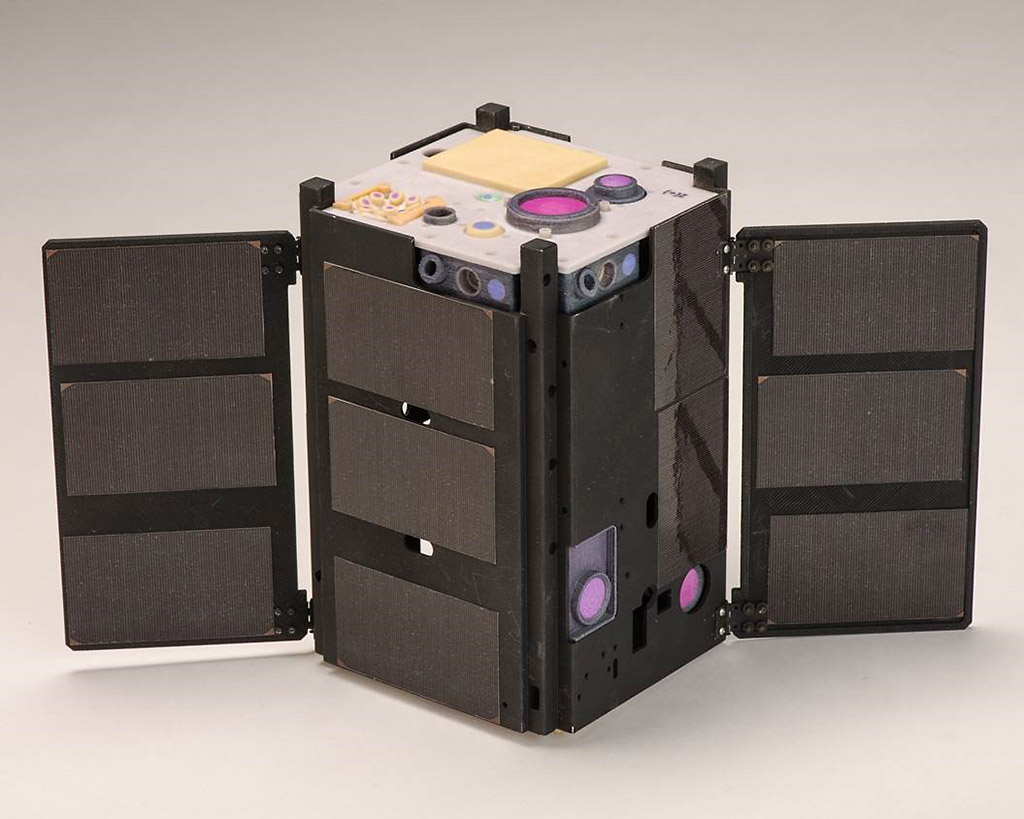Optical Communications and Sensor Demonstration (OCSD) Spacecraft Configuration. OCSD differs from other space-based laser communication systems because the laser is hard-mounted to the spacecraft body, and the orientation of the CubeSat controls the direction of the beam. This makes the laser system more compact than anything previously flown in space. (NASA/Ames)
Home Optical Communications and Sensor Demonstration (OCSD) Spacecraft Configuration. OCSD differs from other space-based laser communication systems because the laser is hard-mounted to the spacecraft body, and the orientation of the CubeSat controls the direction of the beam. This makes the laser system more compact than anything previously flown in space. (NASA/Ames) Optical Communications and Sensor Demonstration (OCSD) Spacecraft Configuration. OCSD differs from other space-based laser communication systems because the laser is hard-mounted to the spacecraft body, and the orientation of the CubeSat controls the direction of the beam. This makes the laser system more compact than anything previously flown in space. (NASA/Ames)
Optical Communications and Sensor Demonstration (OCSD) Spacecraft Configuration. OCSD differs from other space-based laser communication systems because the laser is hard-mounted to the spacecraft body, and the orientation of the CubeSat controls the direction of the beam. This makes the laser system more compact than anything previously flown in space. (NASA/Ames)


